Fieldfares in April
A flock of over 1,000 Fieldfares exploded out of a field in front of me last week and I was immediately reminded of this annual flood of returning European birds. There are 60 million Fieldfares in the world and up to one million visit the UK every winter.
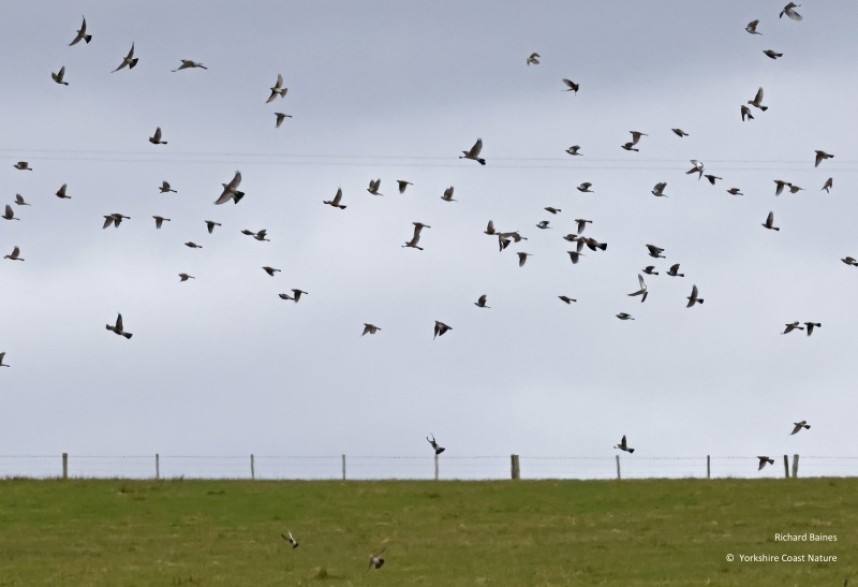
Fieldfares take flight. April 2023 © Richard Baines
On the east coast of Yorkshire, I eagerly await their autumn arrival in late October. I love watching flocks of Fieldfares rushing to reach the land, speeding over the waves in their thousands. Spring flocks can be just as great but the spectacle is found further inland rather than on the coast.
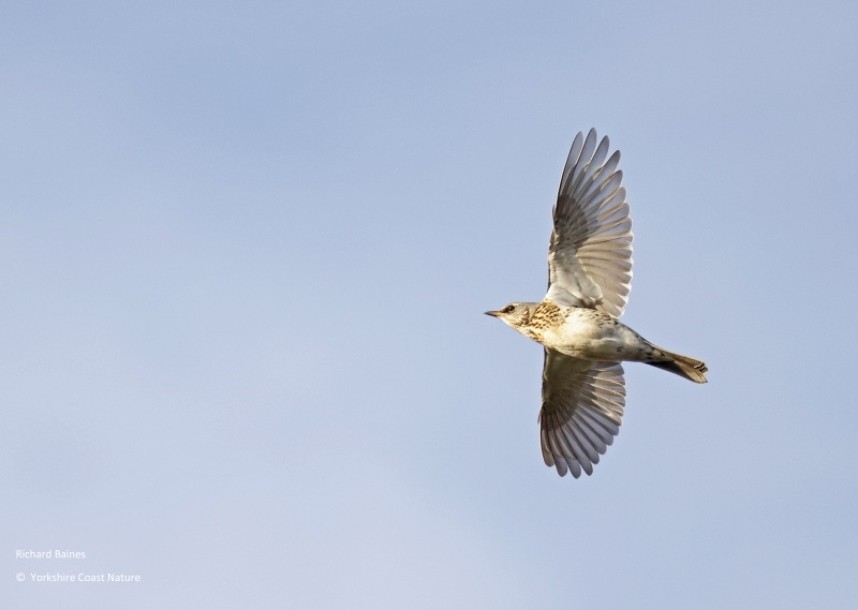
Fieldfare arriving on the coast at Spurn. October 2022 © Richard Baines
Their migration away from their European breeding grounds starts in August a couple of months before they reach us. Staging to closer destinations as they move to areas within continental Europe where they take advantage of the autumn flush of berries. When the food starts to run out, they move further west and south, their departure influenced by temperature change as well as food availability. The longest recorded autumn migration involved a journey of 6,100 km from eastern Siberia to France.
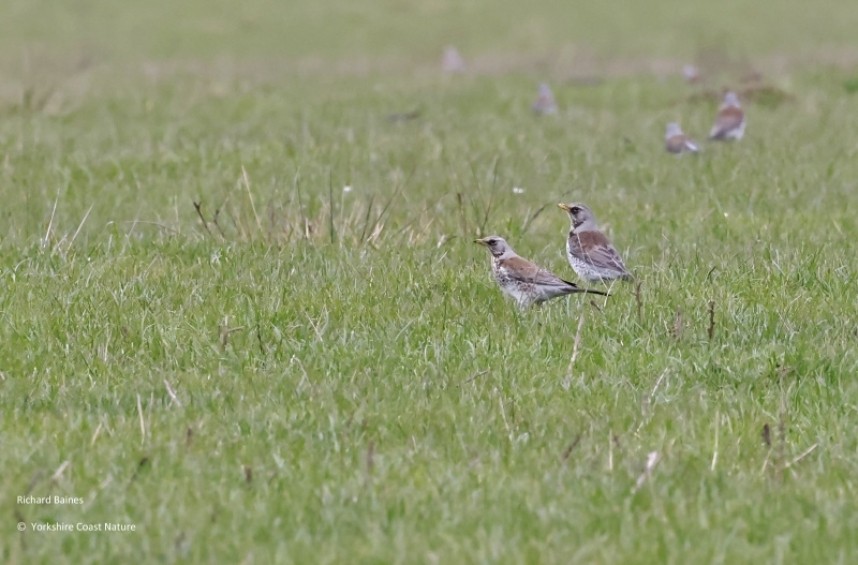
Fieldfares feeding in pasture. April 2023 © Richard Baines
Arrival back on the breeding grounds in central Europe takes place as early as February with males arriving first to set up territory. Females a week or so later and younger birds later still. In Norway however where spring arrives later, so do the Fieldfares with typical arrival dates in April through to late May. So, it appears more likely the big flocks we see in spring are northern Scandinavian Fieldfares waiting until our April and/or May daylight hours trigger their migration.
Pondering their migration strategies at different time of year is great fun. They are one of many birds that can migrate either at night or during the day. Does the lack of big flock sightings on the coast in spring indicate a preference for night migration at this time of year as opposed to daytime movement in autumn? However, they may still be migrating at night in the autumn as they leave Scandinavia late in the day and arrive here early morning. They may also be hungrier on their arrival in autumn than when they leave in spring so we see more on the coast as they are desperate to feed when they first arrive. When they leave in spring with bellies full of food it’s easy to overfly the coast.
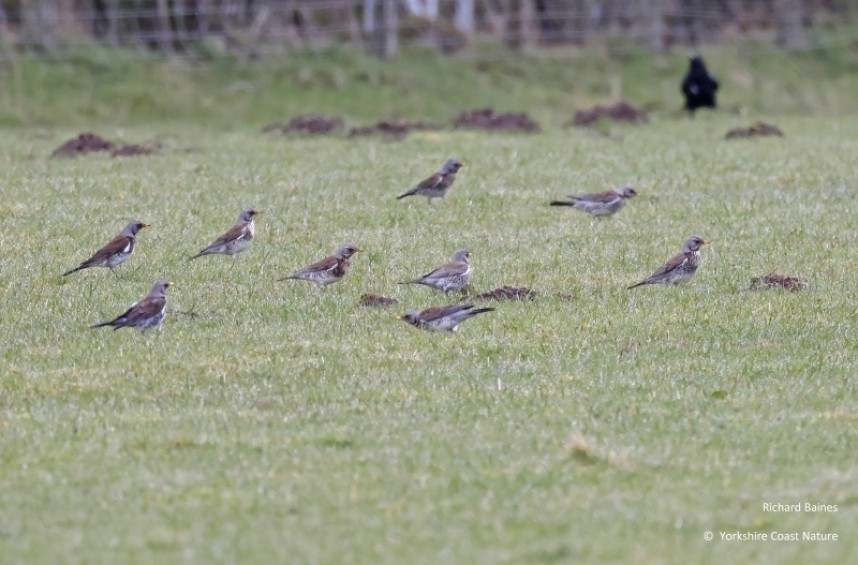
Fieldfares feeding in pasture. April 2023 © Richard Baines
I try to notice which habitats I see Fieldfares feeding in at different times of year. In autumn they often head straight for the berry trees. In spring pasture fields rich in soil invertebrates are often their chosen larder. Bare ground such as mole hills often give easier access to food such as earthworms. These food types have high protein gains for their impending migration.
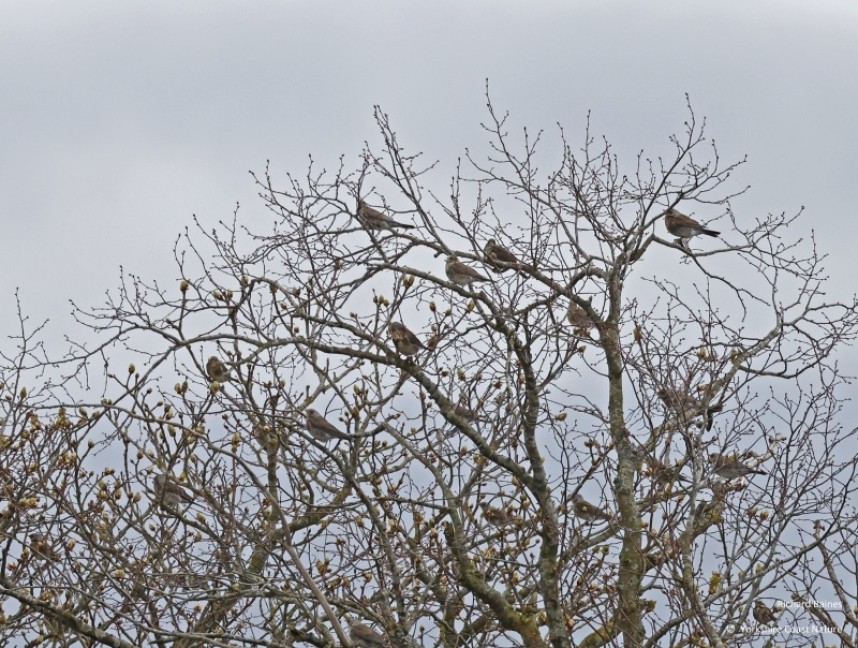
Fieldfare lookout in bare tree canopy. April 2023 © Richard Baines
When the huge flock of 1,000 Fieldfares saw me last week they immediately flew up to the tallest nearby trees where the safest and highest lookouts were. This bird rich canopy landscape was a fantastic sight as they covered the bare branches and cackled to each other keeping the flock tight and in touch. In amongst the flock males were bursting into song which made the experience even richer.
So just occasionally inland birding in April can be better than October on the coast!
Director and Wildlife Guide
Yorkshire Coast Nature



 Back to Blog
Back to Blog
